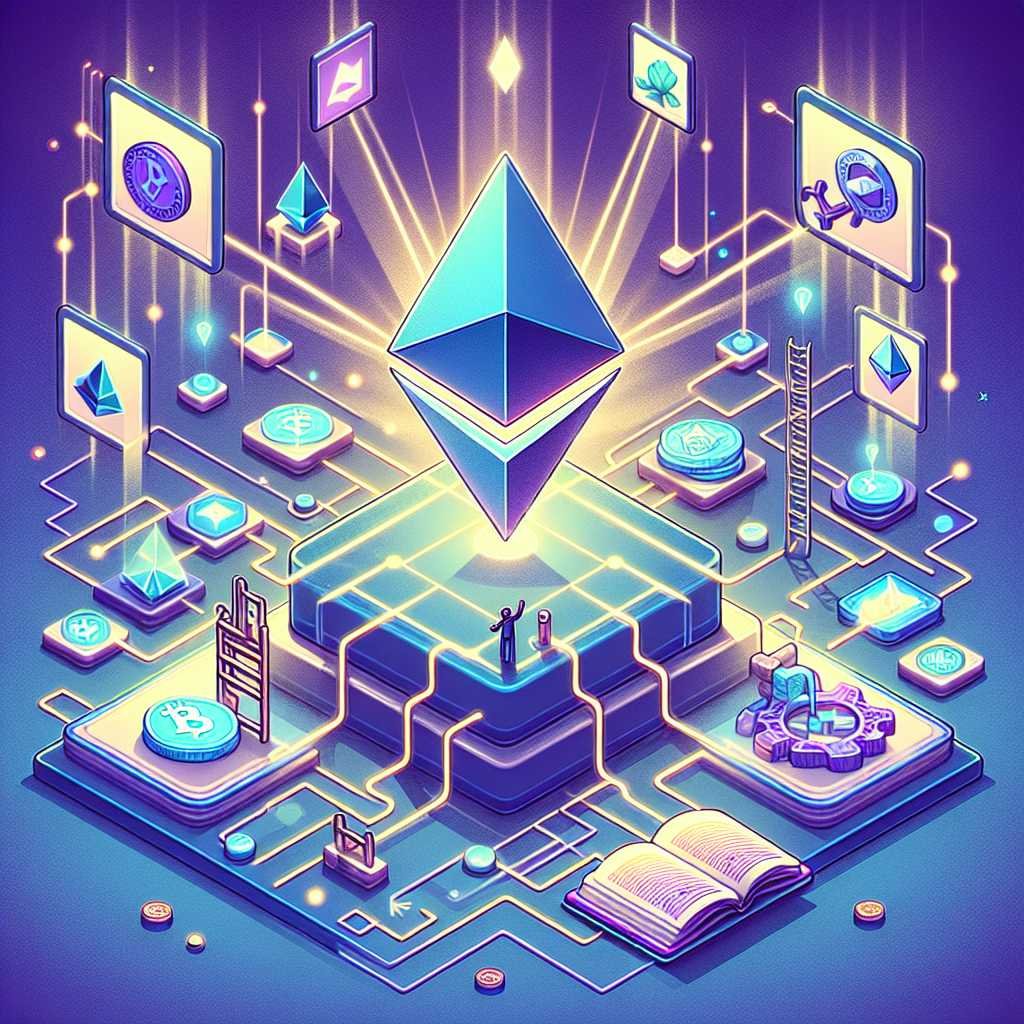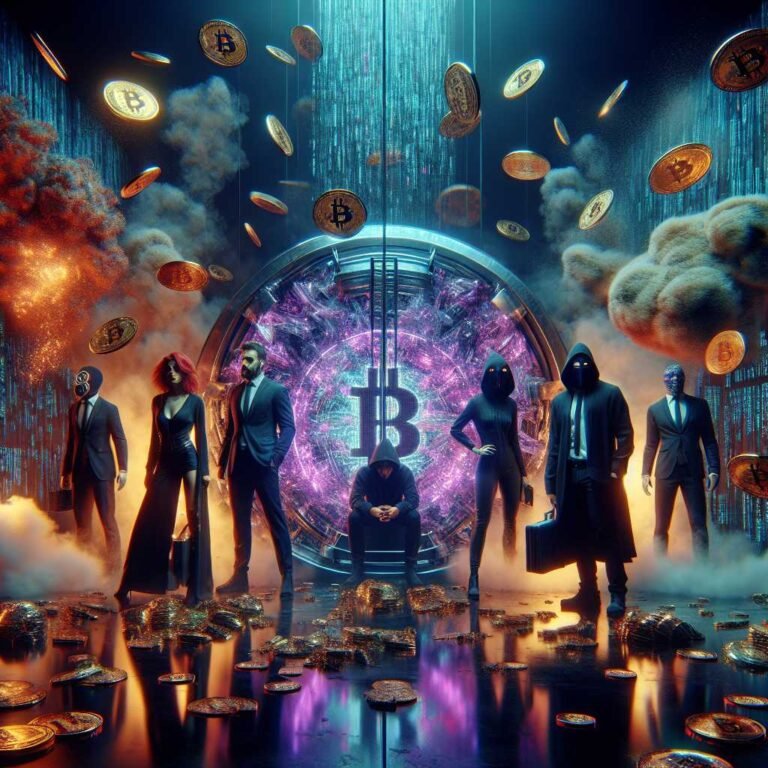Ethereum for Beginners Made Easy: Master Smart Contracts, Tokenized Assets, DeFi, and NFTs—Step Into the Future of Finance (2025 Guide + Free Video Training)
If you’ve ever wondered how to actually use Ethereum—not just read about it—you’re in the right place. Maybe you’ve heard that JP Morgan experiments with blockchain, BlackRock launched a tokenized fund, and NFTs aren’t “dead” so much as evolving. Maybe you’re crypto-curious but also careful. You want clarity, not hype. You want plain English, not code.
This guide is for you.
I’ll break down Ethereum like I would for a smart friend over coffee. We’ll cover how it works, why big institutions care, how to set up your first wallet, how to make a safe first trade on a DEX, and how to protect your assets. You’ll walk away with practical confidence—and yes, there’s a free 1-hour video walkthrough linked at the end to help you go from reading to doing.
Let’s unlock the future of finance, one simple step at a time.
What Is Ethereum? The Internet’s “World Computer,” Explained Simply
Think of Ethereum as a global computer that anyone can use. It runs “smart contracts”—small programs that execute exactly as written. No bank, broker, or platform can change the rules midstream. If the contract says “if A happens, then send B,” it happens.
- Bitcoin is digital gold. It’s great at being money.
- Ethereum is a programmable platform. It’s great at building apps—financial and beyond.
This is why Ethereum powers decentralized finance (DeFi), non-fungible tokens (NFTs), decentralized autonomous organizations (DAOs), and tokenized real-world assets.
For a deeper primer, start with the official site: ethereum.org.
Here’s why that matters: Ethereum lets you lend, borrow, trade, and prove ownership—without a central authority. That opens the door to 24/7, global, programmable finance.
Why Big Institutions Are Quietly Building on Ethereum
When you hear that “Wall Street is moving on-chain,” it often means Ethereum or Ethereum-compatible networks.
- JP Morgan’s Onyx platform explores blockchain-based payments and tokenization across enterprise networks: onyx.xyz.
- BlackRock launched BUIDL, a tokenized U.S. dollar fund on Ethereum: BlackRock BUIDL.
- Franklin Templeton operates an on-chain U.S. Government Money Fund using public blockchain tech: Franklin Templeton OnChain Fund.
Why are they interested?
- Instant settlement and transparent records
- Programmable compliance and payments
- 24/7 markets with global reach
- Lower operational friction
You don’t need to be a developer to grasp the trend: finance is getting software-like. Ethereum is the open platform where much of that innovation lives.
Ether (ETH): The Fuel for Web3 (and More)
ETH is the native asset of Ethereum. It has three essential jobs:
- Pay for computation (“gas”) to run smart contracts.
- Secure the network through staking, where validators lock ETH and earn rewards for keeping the network honest.
- Serve as a core asset in DeFi—as collateral, liquidity, or settlement currency.
Think of ETH as oil, security bond, and financial collateral rolled into one. Some call it a “triple-point asset.” You don’t need to memorize the jargon. Just remember: ETH makes Ethereum run.
The EVM: Ethereum’s “Engine Room,” Minus the Jargon
The Ethereum Virtual Machine (EVM) is the environment where smart contracts live and execute. You can picture it like a universal vending machine:
- You insert ETH (the fee).
- You push a button (call a function).
- The machine executes code and delivers a result (swap tokens, mint NFT, record data).
Because the EVM is standardized, developers can build apps that work across Ethereum and many Layer 2 (L2) networks with minimal changes.
Curious? Here’s the official doc: EVM overview.
Gas Fees, Explained in One Line (Plus 3 Tricks to Pay Less)
Every action on Ethereum costs “gas.” It’s a fee paid in ETH to compensate validators for computing and storage. The formula is simple:
Gas fee = gas used × gas price
- Gas used is how much computation your action needs.
- Gas price is how busy the network is (priced in “gwei,” a tiny unit of ETH).
How to pay less:
- Use Layer 2 networks like Optimism, Arbitrum, or Base. Fees are a fraction of mainnet. Learn more: Layer 2 overview and L2BEAT.
- Transact during off-peak hours when gas prices drop.
- Avoid unnecessary contract interactions. Fewer steps, fewer fees.
More on gas from the source: Ethereum gas docs.
Ethereum Is Now Energy-Efficient
In 2022, Ethereum shifted from proof-of-work to proof-of-stake—an upgrade known as “the Merge.” This cut energy use by ~99.95%, making Ethereum far more eco-friendly than before.
If sustainability matters to you (it should), this is a big deal. Read the data: Energy consumption after the Merge.
Smart Contracts: The Vending Machine Analogy
A smart contract is code that runs exactly as programmed. No one can override it. No customer support rep can “make an exception.” It’s trustless and transparent.
What can smart contracts do?
- Execute a trade when both sides agree.
- Trigger a payment when a condition is met.
- Distribute royalties to creators on every resale.
- Coordinate votes and decision-making in DAOs.
In practice, it’s like a vending machine you can program to do almost anything. Insert conditions, get outcomes—no middleman.
DeFi for Beginners: Lend, Borrow, Trade—No Bank Required
DeFi means “decentralized finance.” It’s a parallel financial system built on Ethereum’s smart contracts.
- Lending and borrowing: Supply tokens to earn interest; borrow against your holdings without selling. See platforms like Aave docs.
- Trading: Swap tokens through automated market makers like Uniswap. No account needed.
- Yield strategies: Provide liquidity to pools or stake assets for rewards. Higher yield often means higher risk—move slowly and research deeply.
Why it matters:
- Open access. No branch, no banker, no paperwork.
- Transparent rules enforced by code.
- 24/7 markets, global participation.
Proceed carefully. Smart contract risk and market volatility are real. Start small.
NFTs and DAOs: Beyond Buzzwords
NFTs (non-fungible tokens) are unique digital items. Think art, music, in-game assets, memberships, tickets, and more. They prove ownership and provenance on-chain.
- Standard: ERC‑721
- Use cases: Art royalties, gaming assets you truly own, gated communities, loyalty programs.
DAOs (decentralized autonomous organizations) coordinate people and capital with on-chain voting and shared treasuries. They’re internet-native organizations.
- Learn more: What is a DAO?
NFTs and DAOs aren’t fads. They’re new building blocks for digital ownership and internet-scale collaboration.
Hands-On: Set Up a Secure MetaMask Wallet in Under 10 Minutes
Your wallet is your key to Web3. It lets you hold ETH, sign transactions, and interact with dApps.
How to set up MetaMask (a popular, free wallet):
- Go to the official site: metamask.io. Never download from a random link.
- Install the browser extension or mobile app.
- Create a new wallet. Set a strong, unique password.
- Write down your Secret Recovery Phrase (seed phrase) on paper. Store offline in two safe places. Do not screenshot it. Do not share it.
- Pin MetaMask in your browser for quick access.
- Fund your wallet by buying a small amount of ETH within MetaMask or transferring from a trusted exchange.
- Optional but wise: connect a hardware wallet for long-term holdings.
Security quick tips:
- Your seed phrase is the master key. Anyone with it can drain your funds.
- Bookmark your most-used dApps to avoid phishing.
- Verify the network and token contract addresses before any transaction.
Hands-On: Make Your First DeFi Trade on Uniswap (Safely)
Let’s walk through a low-risk first trade. Use a small amount you’re comfortable with.
- Open the official app: app.uniswap.org (access via the official docs link; verify the URL).
- Connect MetaMask. Approve only what’s needed.
- Select the token you want to swap from (e.g., ETH) and the token you want to receive.
- Check slippage tolerance and price impact. Lower is safer; default settings are fine for major tokens.
- Review the estimated gas fee.
- Click Swap, then Confirm in MetaMask.
- Track your transaction on Etherscan by clicking the “view on Etherscan” link.
Pro tips:
- Start on a Layer 2 to save fees. You can bridge small amounts of ETH to L2 via official bridges from L2 providers—research and use trusted links from ethereum.org Layer 2.
- Double-check token contract addresses via reputable sources (project docs, ethereum.org token standards).
- If you’re new, avoid obscure tokens. Liquidity can be thin and prices volatile.
The #1 Crypto Security Rule (Plus a 3-Second Safety Check)
The #1 rule: Never share your seed phrase. No support team, no “admin,” no influencer, no one legitimate will ever ask for it. If someone does, it’s a scam.
Adopt the 3-second rule before every transaction:
- Look at the URL: Is it the exact, official domain?
- Look at the chain: Are you on Ethereum mainnet or the intended L2?
- Look at the permissions: Are you approving a token spend? For how much?
If something feels off, stop. Better to miss a trade than lose funds.
Helpful resources:
- Common scam patterns and how to avoid them: FTC: Cryptocurrency scams
- Revoke token approvals you no longer need: revoke.cash
- Inspect contracts and transactions: Etherscan
Bitcoin vs. Ethereum: Which One Should You Own?
You can own both. Many do.
- Bitcoin is simple, scarce, and resilient. It aims to be sound money.
- Ethereum is programmable and flexible. It powers applications.
If you like the idea of building blocks for a new financial system, Ethereum is compelling. If you want digital scarcity and macro resilience, Bitcoin fits. Diversification can be rational. This is education, not financial advice—always do your own research.
Staking ETH: Earn Rewards While Securing the Network
With staking, you lock ETH to help secure Ethereum and earn rewards. You can stake in a few ways:
- Solo staking: You run your own validator with 32 ETH and hardware. Highest control, more responsibility.
- Pooled staking: Stake smaller amounts via a pool. Lower barrier, added smart contract risk.
- Exchange staking: Convenient but adds custodial risk.
Understand the trade-offs: slashing risk (for misbehavior), liquidity, and smart contract risk. Learn the options here: Ethereum staking.
Ethereum’s Roadmap: Lower Fees, Faster Speeds
The big theme: scale Ethereum to billions of users without sacrificing security.
What’s happening now:
- Layer 2 rollups handle most transactions cheaply, while Ethereum acts as the settlement layer.
- EIP-4844 (proto-danksharding) introduced “blob” space to cut L2 costs: EIP‑4844.
- The long-term vision includes full danksharding and data availability improvements, plus upgrades like Verkle trees to reduce node storage.
For a high-level overview, start here: Ethereum roadmap.
Here’s why that matters: lower costs and faster finality make real-world use—payments, gaming, ticketing, enterprise tokenization—practical at scale.
Tokenized Assets: From Treasuries to Real Estate
Tokenization puts real-world assets (RWAs) on-chain as tokens. Think U.S. Treasuries, money market funds, real estate shares, or invoices. They can settle faster, transfer cheaper, and integrate with DeFi tooling.
You’ve already seen the early signs with BlackRock and Franklin Templeton. Expect more: on-chain collateral, programmable dividends, automated compliance.
Caveat: tokenized assets still interact with off-chain legal systems. They’re not “magic.” The advantage is replacing slow paperwork with instant, trackable software workflows.
Your First 24 Hours in Ethereum: A Quick-Start Plan
- Get a wallet: Install MetaMask. Store your seed phrase offline.
- Get ETH: Buy a small amount and send it to your wallet.
- Explore safely: Visit ethereum.org to review basics and best practices.
- Try an L2: Bridge a small amount to a reputable L2 (check L2BEAT).
- Make one simple swap: Use Uniswap docs → app and swap a tiny amount.
- Review security: Revoke old approvals via revoke.cash. Bookmark your trusted links.
Optional next steps:
- Read up on NFT standards (ERC‑721) or token standards (ERC‑20).
- Learn to read transactions on Etherscan. It’s like your blockchain bank statement.
Common Mistakes to Avoid (So You Learn the Easy Way)
- FOMO trading obscure tokens with low liquidity.
- Blindly signing approvals for “unlimited” token spending.
- Storing your seed phrase in cloud notes, email, or photos.
- Rushing during high gas times when fees spike.
- Ignoring network selection and sending funds to the wrong chain.
Slow is smooth. Smooth is fast.
A Quick Word on Taxes and Compliance
Blockchain is global, but taxes are local. Keep records of trades, income (like staking), and NFT sales. Many wallets and exchanges integrate with tax tools. When in doubt, consult a qualified professional in your jurisdiction.
Free 1-Hour Video Walkthrough: From Wallet Setup to Your First Swap
Reading is good. Doing is better. To make this hands-on, I’ve included a free training that shows:
- How to set up MetaMask the safe way
- How to read transactions on Etherscan
- How to make a first swap on Uniswap with confidence
When you’re ready, follow along step by step. It’s beginner-friendly and built to minimize mistakes.
Key Takeaways
- Ethereum is a programmable platform that powers DeFi, NFTs, DAOs, and tokenized assets.
- ETH fuels the network, secures it through staking, and acts as core DeFi collateral.
- Gas fees make sense once you know the formula—and L2s make them cheap.
- Security is everything. Guard your seed phrase. Double-check domains, chains, and approvals.
- Start small. Use trusted links. Learn by doing with a tiny first trade.
If this helped, consider subscribing for more plain-English guides and the free video training. The future of finance is being written now—your seat at the table is one click away.
FAQ: Ethereum for Beginners
Q: Is Ethereum safe for beginners? A: Ethereum is secure at the protocol level, but user errors and scams are common. Use a trusted wallet, never share your seed phrase, and start with small amounts. Learn to verify domains and revoke token approvals. Explore basics at ethereum.org.
Q: How much ETH do I need to start? A: You can start with a small amount—enough to cover gas and a tiny swap. On L2s, even $10–$20 can be enough to experiment. Focus on learning, not maximizing returns at the start.
Q: What’s the difference between Ethereum and Bitcoin? A: Bitcoin focuses on being sound, scarce money. Ethereum is a smart contract platform built for applications. Many people hold both for different reasons.
Q: Are NFTs dead? A: No. The hype cooled, but real use cases—ticketing, gaming, loyalty, digital identity—are growing. NFTs are a tool for ownership and access, not just art speculation. See ERC‑721.
Q: Why are gas fees sometimes high? A: Gas fees rise when the network is busy. Fees depend on how much computation your transaction needs and how congested the network is. To save, use Layer 2s or transact during off-peak hours. Learn more about gas.
Q: What is a Layer 2? Do I need one? A: L2s are networks that process transactions off-chain and post proofs to Ethereum. They’re cheaper and faster. For most beginners, L2s make trying DeFi and NFTs more affordable. See Layer 2 overview and L2BEAT.
Q: Is staking ETH worth it? A: Staking helps secure the network and earns rewards, but it carries risks (slashing, smart contract risk for pooled solutions). If you stake, start small and understand the model. See staking options.
Q: How do I avoid crypto scams? A: Only use official links. Bookmark trusted sites. Don’t click random DMs. Never share your seed phrase. Review and revoke token approvals with revoke.cash. Check consumer alerts at the FTC.
Q: What is Etherscan and why should I care? A: Etherscan is a blockchain explorer for Ethereum. It shows your transactions, token balances, and contract interactions. Think of it as your on-chain statement: etherscan.io.
Q: Can I lose everything? A: Crypto is risky. Prices are volatile. Mistakes can be permanent. Protect your keys, move slowly, and only invest what you can afford to risk. Education and caution are your best defense.
Ready to go from curious to confident? Start with a secure wallet, make one safe transaction, and watch the free video walkthrough to lock in what you’ve learned. The skills you build today could serve you for the next decade of finance.
Discover more at InnoVirtuoso.com
I would love some feedback on my writing so if you have any, please don’t hesitate to leave a comment around here or in any platforms that is convenient for you.
For more on tech and other topics, explore InnoVirtuoso.com anytime. Subscribe to my newsletter and join our growing community—we’ll create something magical together. I promise, it’ll never be boring!
Stay updated with the latest news—subscribe to our newsletter today!
Thank you all—wishing you an amazing day ahead!
Read more Literature Reviews at InnoVirtuoso
- Shadowbanned: The War on Truth and How to Escape It — Book Review, Insights, and the Digital Free Speech Survival Guide
- The Art and Science of Vibe Coding: How Kevin L Hauser’s Book Unlocks the Future of No-Code AI Software Creation
- Quantum Computing: Principles, Programming, and Possibilities – Why Anshuman Mishra’s Comprehensive Guide Is a Must-Read for Students and Researchers
- Book Review: How “Like” Became the Button That Changed the World – Insights from Martin Reeves & Bob Goodson
- Book Review: Age of Invisible Machines (2nd Edition) — How Robb Wilson & Josh Tyson’s Prophetic AI Playbook Prepares Leaders for 2027 and Beyond
- Almost Timeless: The 48 Foundation Principles of Generative AI – Why Mastering Principles Beats Chasing Hacks
- The AI Evolution: Why Every Business Leader Needs Jason Michael Perry’s Roadmap for the Future






